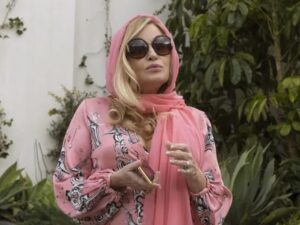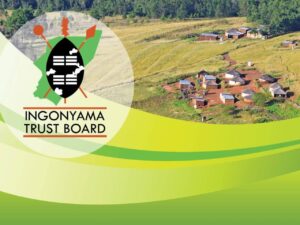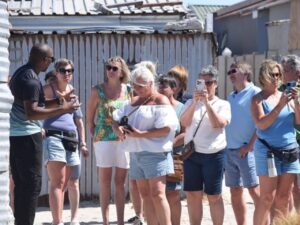Riesling. What a grape. I wonder how much you’ve had? Probably not enough. I know I haven’t. The wines of the Riesling grape are hard to have too much of. It is another type of wine in South Africa that is on the up, slower than Riesling lovers would like; but then all things vinous are slow.
I have made a decision this year to only tell you what to drink, rather than what to avoid. You can glug back your chocolate pinotages and your alcohol reduced ‘wines’ by the gallon; I am not going to say a single word. What I am saying today though is drink Riesling. DRINK ALL THE RIESLING
What is it about this grape that intrigues the wine fanatic? Is it its ability to transmit the characteristics of the vineyard into the wine without losing its own distinct character? Or is it because the wines it produces can be so delicious, so unbelievably moreish that to leave a bottle half-full is to declare your insanity to the world? I don’t know. It is called a Noble variety. It’s up there with Cabernet Sauvignon and Chardonnay. It’s a ripper. We need more in this country, and to do that you need to start drinking more of it. DRINK ALL THE RIESLING.
The taste of Riesling is as varied as the soils it is grown in. There is a steely minerally character in some, it can be floral, peachy, or limey. For me it’s most engaging characteristic is its zip, its taut acidity like a tuned harp string singing the sounds of the heavens.
The best Riesling’s I have tasted come from its traditional stomping ground of Germany and Alsace, but for this column I am going to keep it local. South African Rieslings are few, but their quality is improving with new producers, some new plantings, and a renewed seriousness towards the grape.
Riesling is on my mind after I attended a little tasting at Hartenberg – an excellent producer of the stuff – where we were poured seven current release Rieslings. A snapshot of what is available currently.
The tasting was being presided over by Hartenberg’s winemaker Carl Schultz who pointed out that in America, Riesling is flourishing with plantings up, and consumers buying cases of the stuff. So much that it is now the fastest growing white wine in that country. This is good news for a grape that has generally been adored only by geeks and aficionados.
We tasted three dry Rieslings and four off-dry at Hartenberg. While not exactly mind-blowing there was a solid quality throughout, and they all offered excellent value.
We started with the Klein Constantia 2012. It showed lots of floral character with yellow fruit. The acidity was keeping things frisky, but perhaps lacking the brilliant tension I look for in Rieslings.
The Thelema Sutherland 2011 was next. It was very youthful despite the extra year it had on the KC. Limey and zesty, but lacking a little in complexity.
My wine of the day was next, a newcomer to the Riesling field and one to watch out for. The Spionkop 2011 from Elgin was delicious. Still young and primary, the wine showed lime, litchi, with some herbal notes. The acidity was like that of a granny smith apple: crunchy, zippy, with a touch of delectable sourness. It was moreish. The most expensive wine of the day at around R130, but something worthy of a year or two in the cellar.
We moved on to the Off-dry wines, they were all around 8-14 g/l (residual sugar). These were a little disappointing in my opinion. The Dewetsof 2009 showed its age and was a bit one dimensional, with a candied almost caramel quality. The Thelema 2010 had a palate that came across as a touch insipid and a short finish.
The Nederberg Winemakers Reserve 2012 showed lovely sweet lime, with a rounded mouthfeel, fresh clean and zippy acidity and a long satisfying finish. This is probably the easiest wine to get hold of and a bargain at around 60 bucks a bottle, as good an introduction to local Riesling as you will find.
The final wine was an experimental wine form Hartenberg. It was aged for eight months in old French oak. It was richer, with more sugar than the rest. A strange wine. I am still not sure whether I enjoyed it or not. It was interesting. Weighty and fatter than the others, an oddity that I would like to spend a whole bottle working out.
As I read over these tasting notes I worry that I am leaving you with a negative impression of local Riesling. This really should not be the case, as all of these wines – except the Spionkop – are under R100 they offer incredible value. Especially when you consider the mountains of shit Sauvignon Blanc that are flogged for R80-R100 a bottle.
If I haven’t convinced you to go out and buy a bottle, how about letting the wines do it themselves? On the 9th of February Hartenberg is hosting the Riesling Rocks Festival. All South African Riesling producers will be in attendance and it is the perfect place to lie in the shade of a tree, sip on a glass of chilled Riesling and fall in love with this Nobel grape
I really want you to attend this festival. Only because I think you will find a new variety to love, and give you a new dimension to your wine drinking.
I have a double ticket to give away to the festival. Tell me in the comments why you need to taste Riesling, and the best answer will win the tickets.





